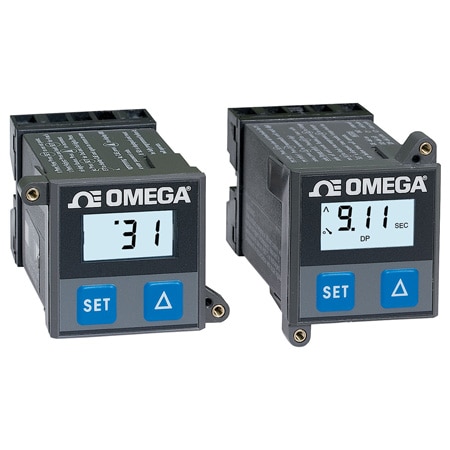1-800-663-4209 | Vos commentaires sont importants, répondez à un sondage rapide commentaires sur le site web

CN1A-Series
Régulateur de température série économique, à 2 sorties marche/arrêt
Modèles en stock
- Deux sorties: relais 3A et 0,5A
- Entrée : Thermocouple K, T, J ou N ou Pt100 2 ou 3 fils
- 10 alarmes configurables
- Commande inverse (chauffe) ou directe (refroidissemnt)
- Alimentation: 230Vca ou 120Vca ou 24Vca/Vcc
- Mise en configuration simple à 2 touches
- Montage en tableau ou par équerre, taille compacte 48x48mm (1/16 DIN)
CN1A-Series
Depuis
C$
394.32
Modèles en stock
L'aperçu du produit
- Additional Features 1 Alarm Output
- Control Output SPDT Relay
- Cutout Dimensions 45 x 45 mm
- Display Type 2.5 Digit LCD
- Form factor 1/16 DIN
- Height 48 mm
- Length 89 mm
- Measurement Type Temperature
- Memory Backup EEPROM
- Number of Inputs 1
- Operating Temperature, Max 50 °C
- Operating Temperature, Min -10 °C
- Output Detail Mechanical Relay;SPDT relay, rated @ 3 A, 240 Vac;Alarm Output-SPST N.O. relay, rated @ 3 A, 240 Vac
- Output Signal None
- Programmable Functions alarm, °C/°F, control action, hysteresis, offset, password, sensor type, setpoint limits
- Storage Temperature, Max 85 °C
- Storage Temperature, Min -20 °C
- Supply Power Note 10 to 32 Vac/Vdc @ 60 mA maximum, 90 to 260 Vac, 50/60 Hz @ 1.5 Va maximum
- Weight 205 g
- Width 48 mm
Description
Le CN1A est un régulateur de température équipé de sorties de commande marche/arrêt avec les fonctions étendues d'un régulateur de type PID. Ses fonctions de régulation et d'alarme sont particulièrement simples à configurer à l'aide de 2 touches en face avant. On peut combiner son utilisation avec celle de l'horloge PTC-1A dans des applications où il est notamment nécessaire de changer fréquemment les paramètres telles que l'impression à chaud, les fours et chambres d'essais.Pour obtenir les caractéristiques complètes de ces produits, consultez la notice commerciale par le lien en bas de cette page.
Accessories
Afficher les notes et les avis
Rated 1 out of
5
by
W Clay from
1/16 DIN On-Off LCD Temperature
I will never buy this instrument again. The thermocouple units will not hold a stable temperature. I am seeing drifts of more than 20 deg C. I bought 5 units and they all behave the same way. If I unplug the thermocouple and plug it in again or replace it with another thermocouple I get totally different Temperature readings. If I turn off the power and restore it again I get different readings. I buy many instruments from Omega with no issue but I am very disappointed in this model.
Date published: 2021-04-07
What kind of power supply does this accept?
Thank you for your inquiry. The voltage supply this controller needs is 90 to 260 Vac, 50/60 Hz @1.5 Va maximum.
Date published: 2024-06-06
Can you please provide details on which types of connections this accepts for thermocouples, and input/output wires?
The CN1A-RTD would use a Female wire quick disconnect terminal for 18 to 22 AWG wire.
Date published: 2023-09-08
Is the electrical connection a simple screw terminal?
Thank you for your inquiry! Yes, the connections will be simple screw terminals but the socket (CN1A-SOCKET) listed under accessories will be needed.
Date published: 2021-04-08
Do you make a controller to heat compressed air to 37 degrees Centigrade for constant flow applications?
Thank you the inquiry. We have some solutions for this type of application. Please email HEATERS@OMEGA.COM or call 800-359-1660 and select temperature pre-sales.
Best regards
OMEGA
Date published: 2020-07-25
Will this controller read a type K thermocouple at liquid Nitrogen temperature (approximately -200C)? Data sheet suggests it only accepts an input range to -99C, regardless of sensor type.
This on/off controller does not have the capability of reading temperatures below -99C.
Date published: 2022-11-22